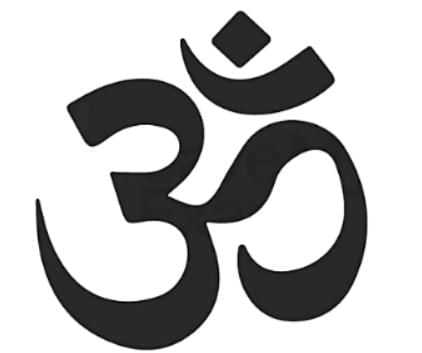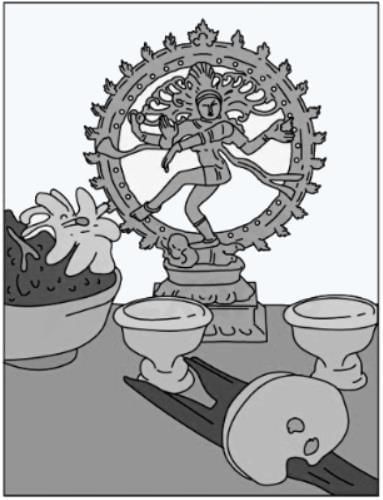Brahman | Religion, Philosophy & Ethics for GCSE/IGCSE - Year 11 PDF Download
What is Nirguna?
Introduction to Hinduism
- Hinduism is the oldest world religion, originating in India.
- Approximately 1.7% of the UK population is Hindu, making it the third most popular religion in the UK.
- Some Hindu families migrated to England from India after the 1947 partition, which split British India into India and Pakistan.
- Other Hindus arrived in the UK from Uganda in 1972 after President Idi Amin expelled Asian Ugandans, giving them 90 days to leave.
- Hindus worship in mandirs and at home.
- The term "puja" refers to worship in Hinduism.
- Hindus worship at shrines containing murtis of gods or goddesses.
- Many Hindus are vegetarian and do not eat meat.
- Hinduism is monotheistic, not polytheistic.
- Hindu gods and goddesses represent different aspects of the one God, Brahman.
- Hinduism teaches that human minds cannot fully comprehend Brahman.
- Hindu scriptures provide two approaches to understand Brahman: as divine consciousness (nirguna) and as God in form (saguna).
Nirguna
Nirguna Brahman refers to Brahman as beyond time and space.
- It describes Brahman as formless and present in all living beings and everywhere.
- This concept helps Hindus focus on Brahman’s eternal qualities, avoiding distraction by various names and forms.
- The Hindu aum or om symbol represents Nirguna Brahman and is used in meditation.
- Hindus believe the aum sound initiated the creation of the universe.

What is Saguna?
Saguna Brahman is a second way Hindus conceptualize Brahman.
- In this view, the numerous gods and goddesses worshipped by Hindus worldwide are manifestations of Brahman.
- No single god or goddess fully embodies Brahman, but each possesses qualities of Brahman.
The Bhagavad Gita (11.8) states: “But you cannot see me [Brahman] with your present eyes, therefore I will give you divine eyes. Behold My mystic opulence!”
Worshipping these forms of Brahman helps Hindus understand Brahman and gain spiritual insight into Ultimate Reality.
- Murtis are images or statues representing Saguna Brahman, used in worship.
- Devotion to murtis allows worshippers to perceive Ultimate Reality more clearly.
- Shiva Nataraja, the Lord of the Dance, is an example of a murti.
- Shiva Nataraja holds a drum in one hand, symbolizing the rhythm of time.
- This serves as a reminder that Brahman, as Shiva, governs time.

The document Brahman | Religion, Philosophy & Ethics for GCSE/IGCSE - Year 11 is a part of the Year 11 Course Religion, Philosophy & Ethics for GCSE/IGCSE.
All you need of Year 11 at this link: Year 11
|
172 docs|3 tests
|
FAQs on Brahman - Religion, Philosophy & Ethics for GCSE/IGCSE - Year 11
| 1. What is the concept of Nirguna in Hindu philosophy? |  |
Ans. Nirguna refers to the aspect of the ultimate reality or Brahman that is without attributes or qualities. It signifies a formless, transcendent state of divinity that cannot be perceived through sensory experience. Nirguna is often associated with the idea that God is beyond human comprehension and description, embodying pure existence, consciousness, and bliss.
| 2. How does Saguna differ from Nirguna in the context of Brahman? |  |
Ans. Saguna represents the aspect of Brahman that possesses attributes and qualities, making it perceivable and relatable to humans. This includes the forms and manifestations of God that people can worship and connect with, such as deities like Vishnu, Shiva, and Devi. Saguna allows for personal relationships with the divine, while Nirguna emphasizes the abstract, impersonal nature of ultimate reality.
| 3. How do Nirguna and Saguna concepts influence Hindu worship practices? |  |
Ans. The concepts of Nirguna and Saguna significantly shape Hindu worship. Saguna worship involves rituals, prayers, and offerings to deities with specific forms and characteristics, fostering a personal connection. In contrast, Nirguna philosophy encourages meditation and contemplation on the formless aspect of the divine, promoting a more introspective and philosophical approach to spirituality.
| 4. What are some key texts that discuss Nirguna and Saguna in Hinduism? |  |
Ans. Key texts that elaborate on Nirguna and Saguna include the Upanishads, which explore the nature of Brahman, and the Bhagavad Gita, which presents both personal and impersonal aspects of the divine. Additionally, various philosophical schools, such as Advaita Vedanta, emphasize Nirguna, while devotional movements often focus on Saguna.
| 5. How do the concepts of Nirguna and Saguna reflect the diversity of beliefs within Hinduism? |  |
Ans. Nirguna and Saguna illustrate the rich diversity within Hinduism, accommodating various spiritual needs and beliefs. While some followers may prefer the abstract, philosophical understanding of Nirguna, others find solace and connection in the tangible, personal representations of Saguna. This duality allows for a wide range of practices and beliefs, making Hinduism a highly inclusive faith.
Related Searches















